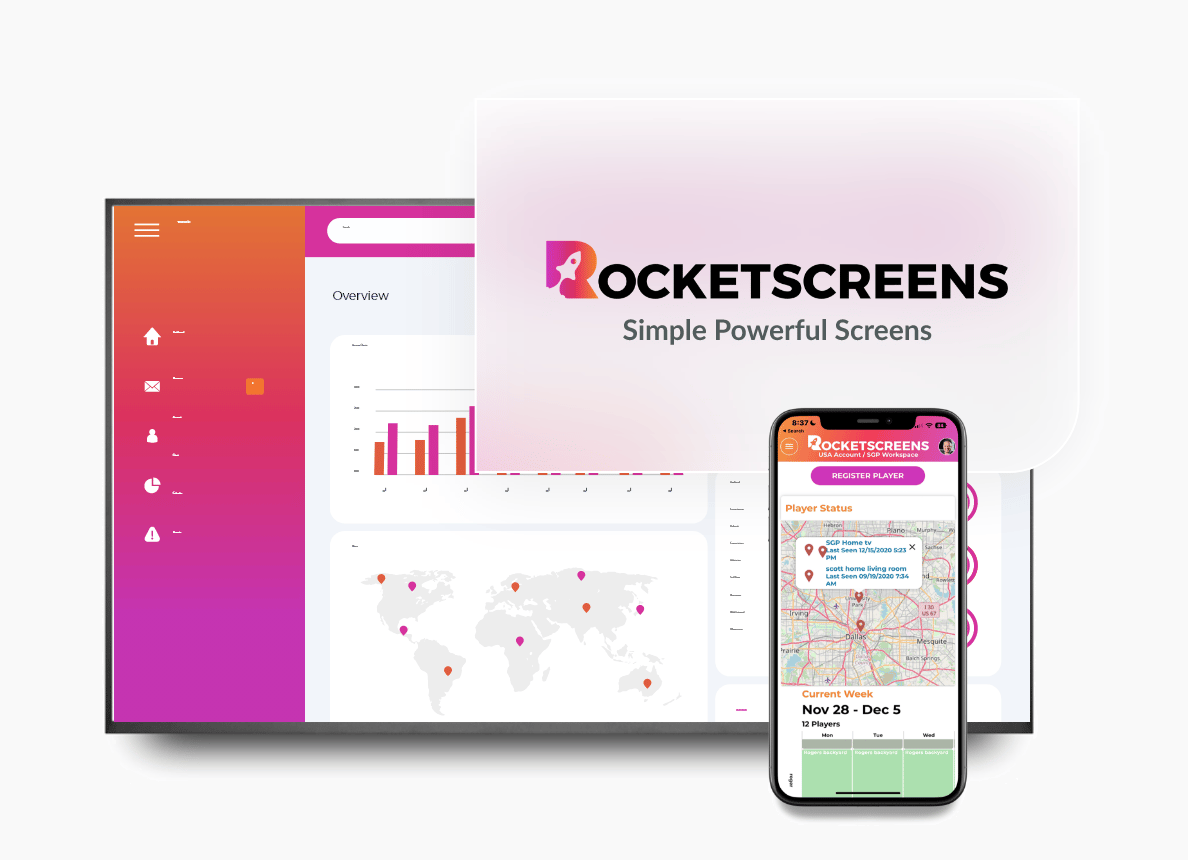
The technology sector moves at a blistering pace. Data isn't just a byproduct of operations; it's the core asset. From user engagement metrics and software development cycles to sales pipelines and network performance, tech companies are sitting on mountains of information. The challenge isn't collecting this data, but making sense of it quickly enough to make smart decisions. This is where business intelligence (BI) tools become essential, and Microsoft Power BI has established itself as a front-runner for many tech organizations.
Power BI helps translate complex datasets from various sources into coherent, visually immersive, and interactive insights. For a tech company, this means moving beyond static spreadsheets and disjointed reports. It means creating a live, dynamic view of the entire business, accessible to everyone from developers to the C-suite. This guide explores how the technology industry is using Power BI to not only understand its data but to act on it, driving growth and staying ahead of the curve.
Why Power BI is a Natural Fit for the Technology Industry
Tech companies operate in an environment of constant change and immense complexity. They need tools that are agile, scalable, and deeply integrated. Power BI meets these needs effectively for several reasons.
First, its ability to connect to a vast array of data sources is a huge advantage. Tech stacks are often a mix of cloud services, proprietary databases, and third-party applications. Power BI can pull data from Azure, AWS, Salesforce, Google Analytics, Jira, and hundreds of other sources, consolidating information into a single, unified view. This removes data silos, providing a holistic picture of business operations.
Second, the platform is built for real-time analysis. In tech, yesterday's data can be obsolete. Whether monitoring a new software launch or tracking server uptime, teams need to see what's happening now. Power BI's streaming data capabilities allow dashboards to update in real-time, enabling proactive responses instead of reactive fixes.
Finally, its deep integration with the Microsoft ecosystem—including Office 365, Azure, and Teams, makes it a familiar and accessible choice for many organizations. This familiarity lowers the barrier to entry, allowing teams across different departments to start building reports and gaining insights without extensive training. The combination of accessibility, connectivity, and real-time capability makes Power BI an ideal instrument for the data-rich world of technology.
Key Use Cases of Power BI in Tech Companies
Power BI is not a one-size-fits-all tool; its value comes from its adaptability to different functions within a tech organization. Let's examine how various departments utilize it to transform data into actionable insights.
Software Development and Product Management
The "build" side of a tech company lives and breathes metrics. Product and development teams rely on data to manage workflows, understand user behavior, and guide future development.
- Agile Project Management: Teams using Agile or Scrum methodologies can create Power BI dashboards to track sprint progress. Visualizing burndown charts, team velocity, and cycle times helps identify bottlenecks and keep projects on schedule. Integrating with tools like Jira or Azure DevOps, these dashboards provide a live view of the development pipeline.
- Product Adoption and Engagement: After a product or feature is launched, the work is far from over. Product managers use Power BI to analyze user behavior. Dashboards can show daily active users (DAU), feature adoption rates, user session duration, and churn rates. By seeing which features are popular and where users drop off, teams can make informed decisions for the product roadmap.
- Bug Tracking and Quality Assurance: QA teams can connect Power BI to their bug tracking systems to monitor the number of open tickets, resolution times, and bug severity. This helps prioritize fixes and provides leadership with a clear overview of product stability and quality trends over time.
Sales and Marketing Teams
For the "sell" side of the business, data is crucial for understanding customers and driving revenue. Power BI helps sales and marketing teams measure performance and refine their strategies.
- Sales Pipeline Analysis: Sales leaders can build dashboards that provide a comprehensive view of the sales funnel. They can track leads by source, conversion rates at each stage, deal size, and sales cycle length. This allows for accurate revenue forecasting and helps managers identify where reps might need coaching. By integrating with CRMs like Salesforce or HubSpot, the data is always current.
- Marketing Campaign Performance: Marketing teams can pull data from Google Ads, Meta Ads, LinkedIn, and web analytics platforms to create a single performance dashboard. This dashboard can track key metrics like cost per acquisition (CPA), click-through rates (CTR), and campaign ROI. Seeing all this information in one place helps marketers allocate their budget more effectively.
- Customer Segmentation: By analyzing customer data, marketing teams can use Power BI to identify key customer segments. Visualizing demographics, purchase history, and product usage helps in creating targeted campaigns and personalized messaging, leading to higher engagement and customer lifetime value.
IT Operations and Infrastructure Management
The teams that keep the lights on rely on constant monitoring to ensure systems are secure, stable, and efficient. Power BI dashboards are their command centers.
- Network and Server Monitoring: IT operations teams need to maintain system health. Power BI can connect to monitoring tools to visualize server uptime, CPU usage, network latency, and application performance in real-time. These dashboards, often displayed on large screens in a Network Operations Center (NOC), allow engineers to spot anomalies instantly and prevent outages.
- Helpdesk and Support Ticket Analysis: Managing user support is a critical IT function. A Power BI dashboard connected to a ticketing system like Zendesk or ServiceNow can show ticket volume, resolution times, first-contact resolution rates, and agent performance. This helps support managers identify common issues, allocate resources, and improve overall service quality.
- Cloud Cost Management: With the rise of cloud computing, managing costs on platforms like Azure or AWS is a major priority. Power BI can create detailed reports that break down cloud spending by department, project, or resource. This transparency helps organizations control costs and optimize their cloud infrastructure.
Finance and Executive Leadership
For high-level strategy and financial oversight, leadership needs a clear, concise view of the entire business. Power BI delivers this "single source of truth."
- Financial Health Dashboards: The finance department can create dashboards that visualize profit and loss (P&L) statements, cash flow, and balance sheets. This makes it easier to spot trends, analyze profitability, and present financial information to stakeholders in an easily digestible format.
- Company-Wide KPI Tracking: Executives need to monitor the key performance indicators (KPIs) that define business success. A C-suite dashboard in Power BI might include metrics like Monthly Recurring Revenue (MRR), Customer Acquisition Cost (CAC), and employee retention rates. This high-level view supports strategic planning and board-level discussions.
- Operational Business Reviews: Instead of pulling data from ten different spreadsheets for a weekly business review, leaders can simply pull up a live Power BI dashboard. This ensures everyone is looking at the same up-to-date information, leading to more productive and data-driven meetings.
Amplifying Power BI's Impact: From Desktop to Digital Screens
Creating insightful Power BI dashboards is a major step forward. However, their value is limited if they remain hidden away on individual laptops or are only reviewed during weekly meetings. The most forward-thinking tech companies understand that data should be visible, ambient, and part of the daily conversation. This is where digital signage comes in.
Broadcasting key Power BI dashboards on screens placed in high-traffic areas like development floors, sales pits, and break rooms fosters a truly data-driven culture. When teams can see their goals and their progress toward them in real-time, it creates alignment, accountability, and motivation.
Why Display Power BI Dashboards on Digital Signage?
- Promotes Data Transparency: Making data public demystifies it. It shows teams that their work has a direct impact on the company's goals and that decisions are being made based on facts, not guesswork.
- Keeps Teams Aligned and Focused: A sales team seeing a live leaderboard or a development team watching a sprint burndown chart is constantly reminded of their collective target. This shared visibility keeps everyone pulling in the same direction.
- Celebrates Wins Instantly: When a major sales deal closes or a critical bug is fixed, updating that metric on a public screen is a powerful way to recognize achievements and boost morale.
- Provides Immediate Alerts: For an IT operations team, a dashboard that flashes red when a server goes down is an unmissable alert, enabling a faster response than an email notification ever could.
Enter RocketScreens: The Simple Way to Broadcast Your BI
Making your data visible shouldn't be a complicated technical project. This is the principle behind RocketScreens. Our platform was designed to make sharing your important information as simple as possible. With a secure, native Power BI integration, you can get your dashboards out of your browser and onto any screen in minutes.
The process is straightforward: connect your Power BI account to RocketScreens, select the reports or dashboards you want to share, and push them to designated screens. There's no need to deal with complex configurations or insecure workarounds.
Better yet, RocketScreens isn't just for Power BI. Tech companies rely on a wide range of tools. Our platform securely connects to over 100 applications, including Salesforce, Tableau, and Zoho Analytics. This means you can create a dynamic digital signage channel that cycles between your Power BI sales forecast, your live development tasks in Jira, and your top-performing content from your website. It provides a complete, 360-degree view of your business, keeping every department informed and engaged.
Best Practices for Power BI in Your Tech Organization
To get the most out of Power BI, it helps to follow a few guiding principles.
- Start with a Clear Goal: Before you build any report, ask what question you are trying to answer or what decision you are trying to make. A focused dashboard that tracks a few critical metrics is far more useful than a cluttered one that tries to show everything.
- Focus on Data Quality: Your insights are only as good as your data. Ensure your data sources are clean, accurate, and reliable. Time spent on data hygiene is never wasted.
- Design for Your Audience: A dashboard for an executive should be high-level and strategic. A dashboard for an IT operations team should be detailed and tactical. Tailor the visuals and the level of detail to the people who will be using it.
- Make It Accessible: Don't let your valuable insights get trapped on a single person's computer. Use Power BI's sharing features and consider broadcasting key dashboards on central screens to maximize their visibility and impact.
Data is the engine of the modern technology company. Tools like Power BI provide the instruments to understand what that engine is doing, how it's performing, and where it's headed. By visualizing data from every corner of the business, from code commits to customer clicks, tech companies can navigate challenges, spot opportunities, and build better products.
Making your data visible is the final and most important step in making it valuable. When everyone in the organization can see the metrics that matter, they become more than just numbers on a screen. They become a shared language for success. Consider how broadcasting your key insights can align your teams and accelerate your growth.





